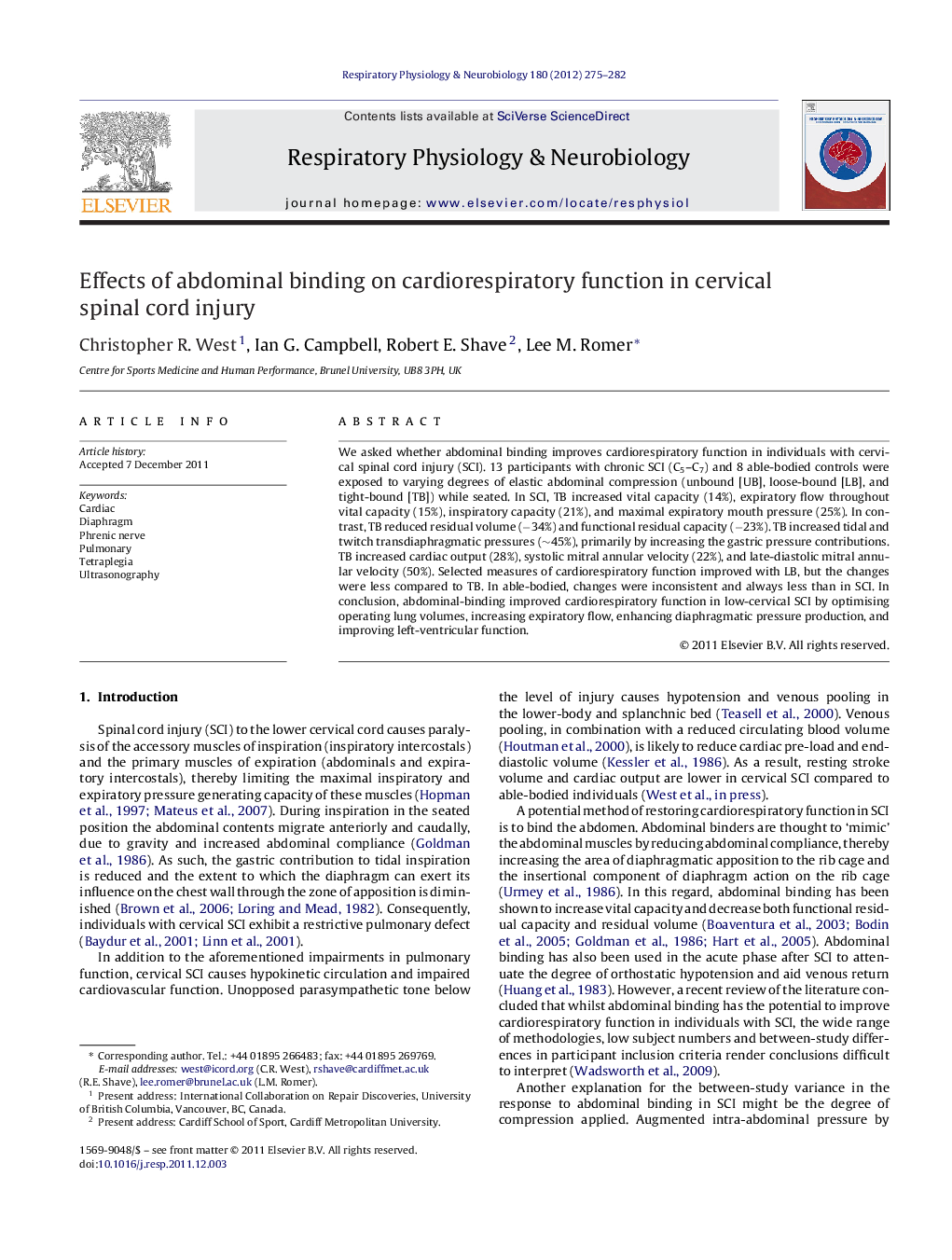| Article ID | Journal | Published Year | Pages | File Type |
|---|---|---|---|---|
| 5926345 | Respiratory Physiology & Neurobiology | 2012 | 8 Pages |
We asked whether abdominal binding improves cardiorespiratory function in individuals with cervical spinal cord injury (SCI). 13 participants with chronic SCI (C5-C7) and 8 able-bodied controls were exposed to varying degrees of elastic abdominal compression (unbound [UB], loose-bound [LB], and tight-bound [TB]) while seated. In SCI, TB increased vital capacity (14%), expiratory flow throughout vital capacity (15%), inspiratory capacity (21%), and maximal expiratory mouth pressure (25%). In contrast, TB reduced residual volume (â34%) and functional residual capacity (â23%). TB increased tidal and twitch transdiaphragmatic pressures (â¼45%), primarily by increasing the gastric pressure contributions. TB increased cardiac output (28%), systolic mitral annular velocity (22%), and late-diastolic mitral annular velocity (50%). Selected measures of cardiorespiratory function improved with LB, but the changes were less compared to TB. In able-bodied, changes were inconsistent and always less than in SCI. In conclusion, abdominal-binding improved cardiorespiratory function in low-cervical SCI by optimising operating lung volumes, increasing expiratory flow, enhancing diaphragmatic pressure production, and improving left-ventricular function.
⺠We asked if abdominal binding improves cardiorespiratory function in cervical spinal cord injury. ⺠Lung volumes, expiratory flow, diaphragm function and cardiac function are improved. ⺠Improvements in cardiorespiratory function are dose-dependent.
